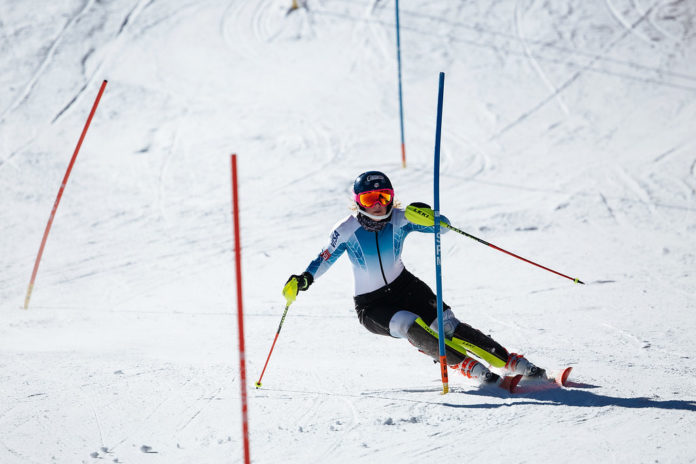STRIVR, the California-based virtual reality training specialists, are assisting U.S. Ski and Snowboard teams train for the Winter Olympics with top performance technology. With the 2018 Winter Olympics starting on February 9th, Team USA is just mere weeks away from taking to the snowy slopes of South Korea.
High-Tech Training

Best known for their VR sports simulation training for the NFL, NHL, and NBA, STRIVR is now helping Olympic athletes and coaches use technology to improve performance. Top skiers and snowboarders can watch and replay a 360-degree video of their downhill course without having to put on ski or snowboard gear, or exhaust themselves from going through a course repetitively in the cold.
Athletes simply put the VR headset on at home or wherever they’re training, view the race course from the STRIVR simulation, and then train mentally and physically for their events. Athletes see the snow, view the landscape, see the world zipping past them, and virtually ski or snowboard and then train for an event on a virtual mountainside they’ve really only stepped on once or twice before.
Video Credit to: Troy Taylor via YouTube
Mental preparation and training with STRIVR has been proven to take the anxiety out of their performance and speeds up reaction times. VR training could give U.S. athletes the advantage to earn the gold in snow packed PyeongChang. Equipped with tethered headsets for home use and mobile headsets for use on the road, athletes started training using the STRIVR training program to prepare for the Olympics years ago.
In a statement, Troy Taylor, High Performance Director at U.S. Ski & Snowboard said, “We first started working with STRIVR around two years ago,” explains Taylor. “Since then, we have seen that the value of the work we do with STRIVR is confirmed in the feedback we have from our athletes and their coaches taking part in World Cup and Olympic events. They feel that 360 video and VR increases both the confidence and performance of the athletes in events.”
Keeping Athletes in Beast Mode

Olympians are not only mentally preparing for their courses, they’ve also used STRIVR as they healed from injuries during rehabilitation and kept their body in competitive shape. If an athlete was unable to ski or snowboard because of an injury or surgery, they were still able to train and visualize alongside their team by using STRIVR.
“Our athletes have very limited time and opportunities to train on racecourses when they are competing in World Cup or Olympic events,” Taylor said. “The clear advantage of VR is that it is a great way to help athletes get more used to and learn specific courses, which is an obvious performance benefit.” Adding, “The feedback we have from our athletes suggests that the biggest benefit of using VR is building confidence.”

Team USA trainers found that injured athletes, like Laurenne Ross, not only maintained muscle memory by using STRIVR, but they also found that the training exercises helped train all athletes smarter in order to prevent injuries from misuse. Collecting data at training sessions also provided trainers and coaches with valuable information about where an athlete was looking or not looking, as well as helped them memorize helpful landmarks.

This virtual eye-tracking helped athletes and their team discover a new way to tackle curves and slopes, but also urged them to introduce elemental obstacles like fog, snowfall, or rain to their training sessions. All of this next level training not only kept recuperating athletes training, it kept them confident in their abilities.
Before STRIVR, trainers and physical therapists had to rely on exercises and other treatments, while coaches supplemented the missed time on the course with strategy and planning sessions. Implementing STRIVR helps athletic teams get on the same page with VR — helping injured and non-injured athletes maintain reaction times away from the course, building familiarity with far-away courses, and all the while motivating athletes to keep their eye on the gold.


